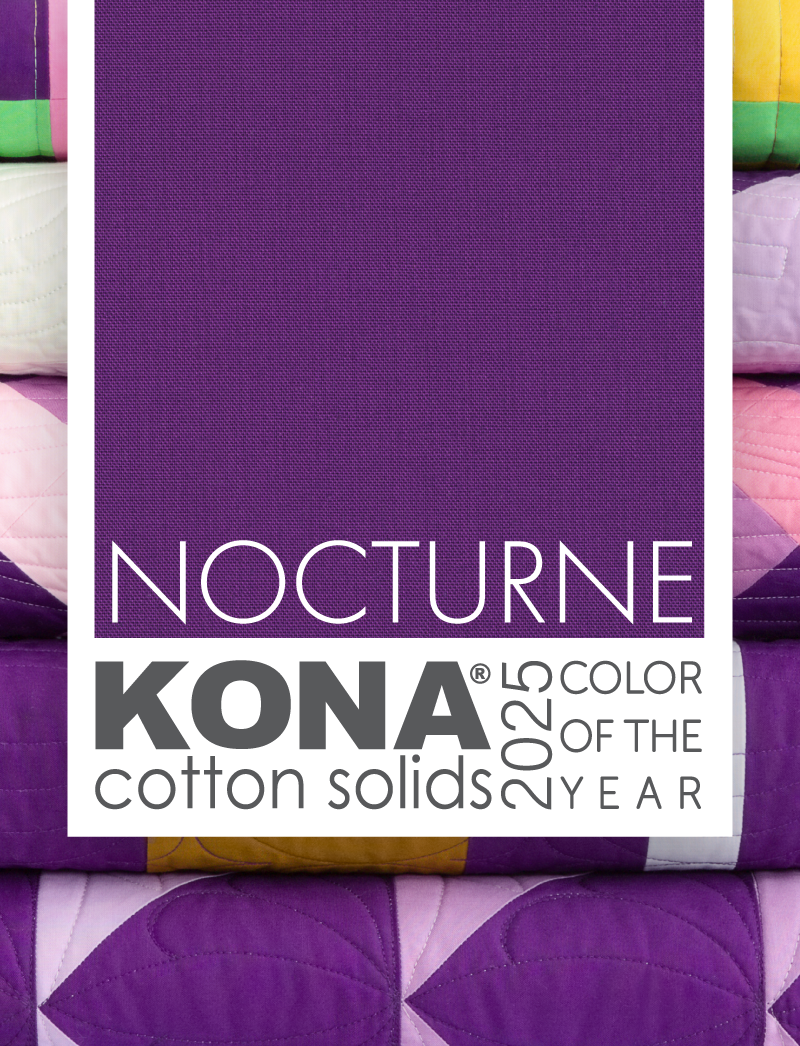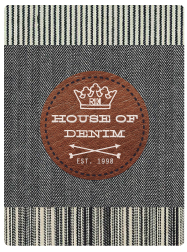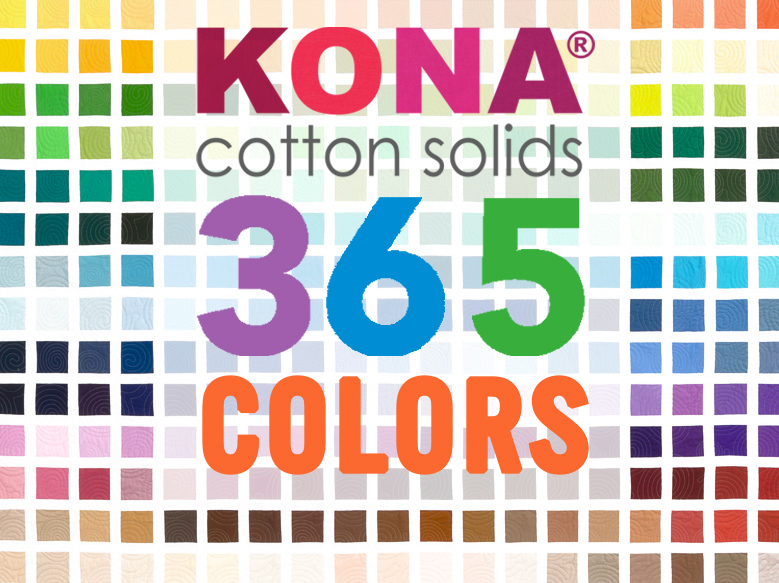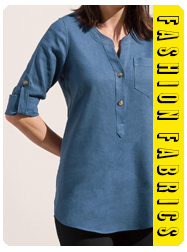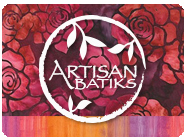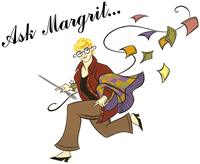Ask Margrit Spring 2005
Quilting Questions Answered
The e-Forum column is dedicated to you the quilter. I would like to encourage you to participate in the e-Forum by submitting any events, thoughts, questions and hints to "Ask Margrit" and submitting you information via e-mail. If you submit information regarding quilting events in your area, we will post as many as possible. Please submit at least 2 months prior to the event.
In this edition of Ask Margrit:
Q: Needle turning under seam allowance for appliqué is difficult. Is there an easy way to prepare circles for appliqué?
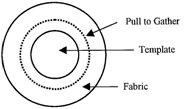 A: To make appliqué circles, cut a cardboard template to the finished size of the circle. Lay the template on the wrong side of the fabric and draw around it. Cut a generous 1/4" away from the drawn line. Sew a running stitch 1/8" away from the drawn line. Replace the template and pull the running stitch to gather the fabric around the template. Spray the circle with spray starch, press, and carefully remove the template (be sure to press until the starch is dry).
A: To make appliqué circles, cut a cardboard template to the finished size of the circle. Lay the template on the wrong side of the fabric and draw around it. Cut a generous 1/4" away from the drawn line. Sew a running stitch 1/8" away from the drawn line. Replace the template and pull the running stitch to gather the fabric around the template. Spray the circle with spray starch, press, and carefully remove the template (be sure to press until the starch is dry).
Q: Sometimes after my quilts have been quilted the borders ripple. Why is this happening, and what can I do to make the quilt lay flat?
A: Rippling borders are usually caused by the body of the quilt containing more quilting than the borders. Before sewing on the binding, run a line of basting stitches 1/8" from the edge of the quilt on all four sides of the quilt.
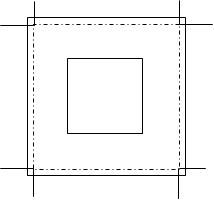
Loosely gather each edge until the borders lay flat. Measure to make sure the top and bottom are the same measurement, and the sides of the quilt are the same length. Space the gathering over the entire top, bottom, and sides of the quilt. Bind the quilt, the basting stitches will be covered by the binging. Measure the quilt in several places horizontally and vertically to make sure the quilt measures the same top and bottom and that the two sides are equal.
Q: What is "fussy cutting" and how do I do it? Can I use design elements from fabric even when they are not on the straight of grain? What if I have to have bias edges on the patch to get the design element centered the way I want?
A: Fussy cutting refers to using specific parts of the fabric to manipulate the design. For example, sometimes a quilter will fussy cut a floral fabric so that a flower is perfectly centered in the patch. It is important to compensate for seam allowances and see through template plastic can be helpful. By cutting a template the same size as the patch needed, it is possible to preview the fabric and make sure that you are getting the part that you want.
It is acceptable to fussy cut patches with edges that do not fall on the straight of grain. However, these edges can easily become distorted. To compensate for this, it is best to sew these edges to patches that ARE cut on the straight of grain. The seam will serve to stabilize the bias edges. If that solution is not possible, then a stay stitch can be taken 1/8" around the edges of the fussy cut patch to keep it from stretching. One final note, it is very important to be careful when pressing units that do have bias edges. Aggressive ironing techniques can ruin bias edge patches and blocks that contain them. By stabilizing the edges and be conservative in pressing, fussy cut patches can add a wonderful element to any type of quilt.
Q: I cut two sets of borders for my quilt. The inner border was cut across the width of the fabric. The outer border was from a solid fabric and I cut it lengthwise to avoid having a seam line show. I measured them very carefully but the lengthwise border ended up being too short for the inner border. What went wrong?
A: Fabric does tend to stretch slightly when it is sewn and the crosswise grain of the fabric stretches a lot more than the lengthwise grain. While both borders may have been cut correctly, by the time the inner border was sewn to the quilt its edge had stretched out enough to be longer than the outer border strip. There are several solutions to this problem. One is to simply cut all the border strips the same direction. Two is to sew the border strips together before joining them to the body of the quilt block and making mitered corners. Three is to stay stitch the border cut on the crosswise grain 1/8" in from the outer edge. The stay stitching will prevent distortion and should keep the two borders the same size.


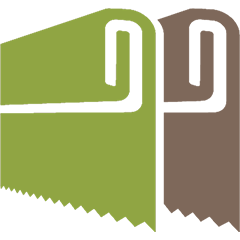 All Fabrics
All Fabrics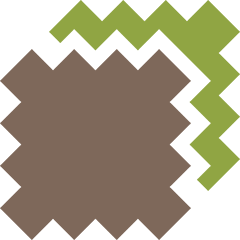 Precuts
Precuts Patterns
Patterns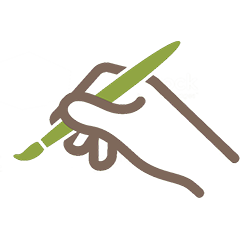 Designers
Designers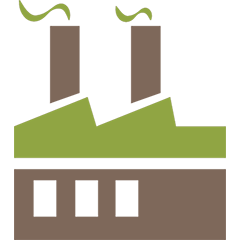 Manufacturers
Manufacturers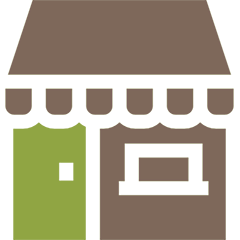 Where to Buy
Where to Buy Customers Only
Customers Only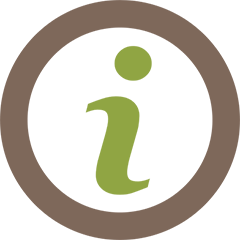 New customers
New customers.gif)
